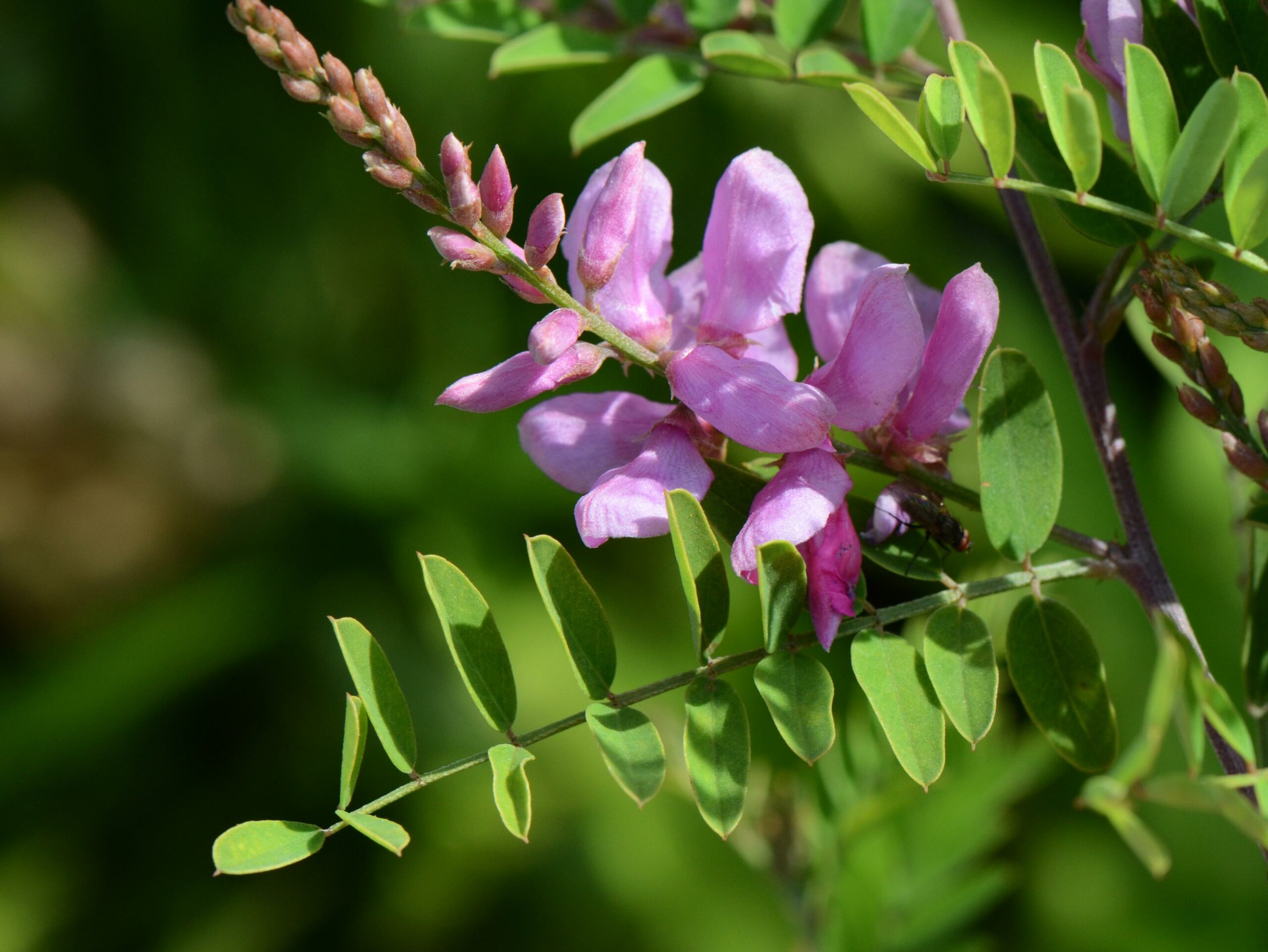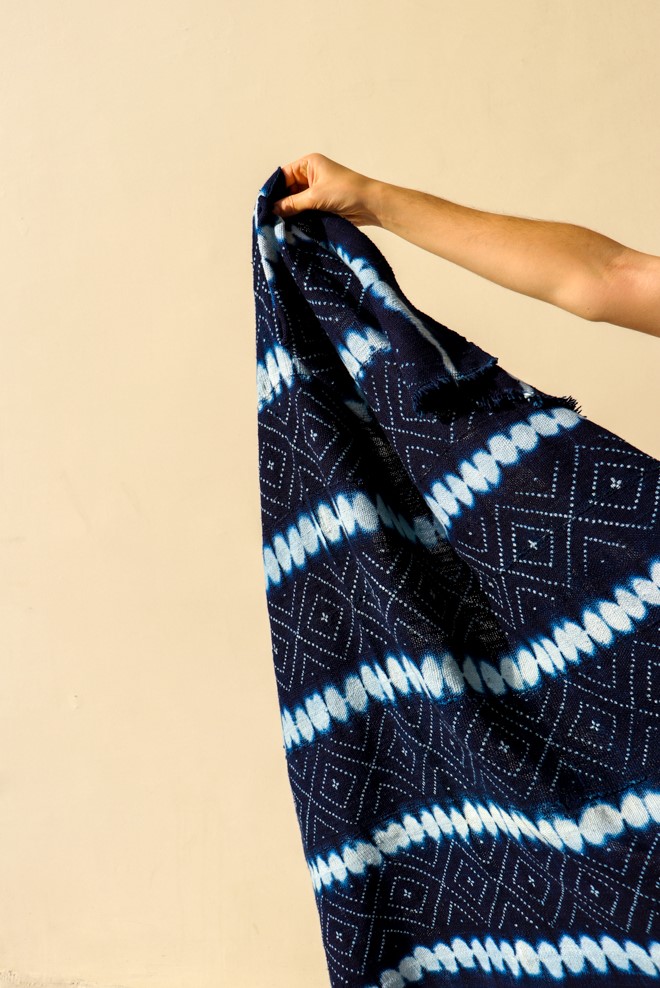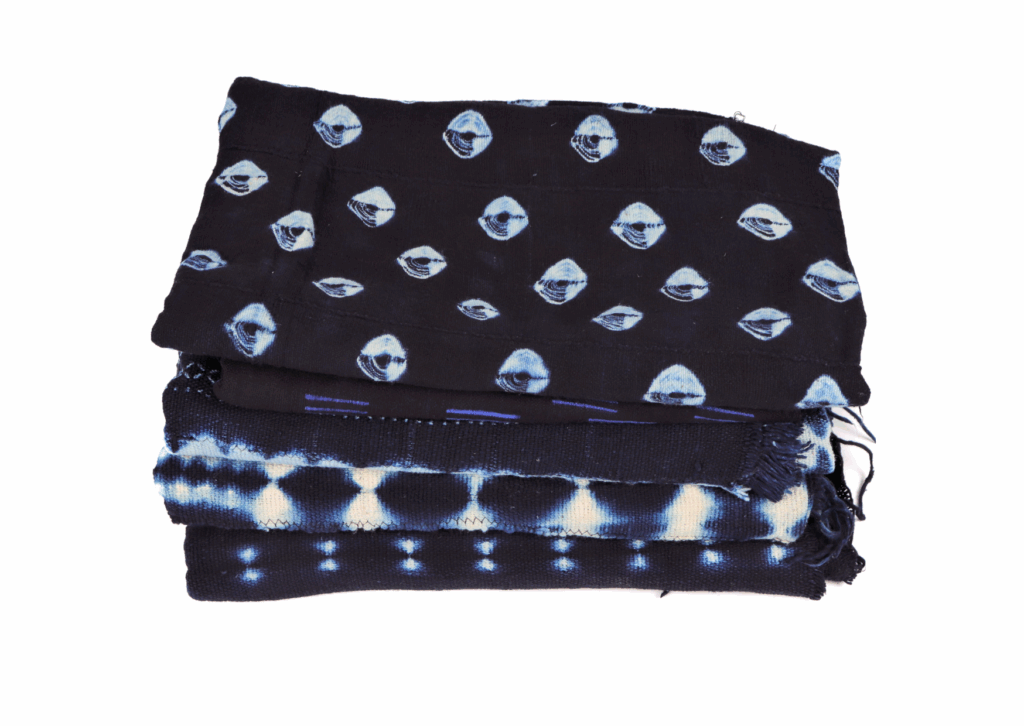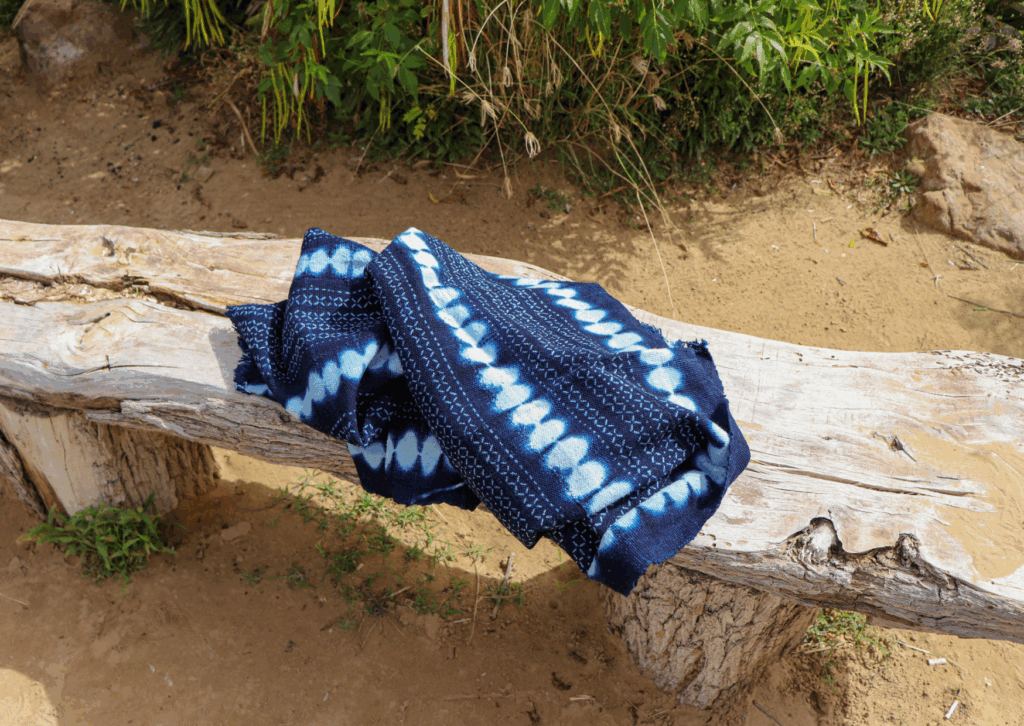Origin of the indigo dye
The earliest evidence of use of the indigo dying technique has been found in Peru. It is believed that is was already used 6,000 years ago. It then spread throughout the world, in particular in Ancient Egypt, East and South Asia – whether it traveled from South America to these remote regions is still unknown.

Indigo textile in Africa
Indigo fabric is originally a traditional cloth from the Dogon tribe in southwest Mali, but it is one of the most popular fabrics of Africa. Traditional indigo as it is currently used is made of cotton, which is usually harvested in neighboring regions. Symbolic of wealth and prosperity, this fabric is admired by many different cultures in Africa (Mali, Guinea, Burkina Faso, etc.).

Indigo dyeing is traditionally a natural dyeing technique derived from a plant called indigofera tinctoria or true indigo. The leaves of this small bush are used to create indigo, which characterize this profound blue color. The leaves are mixed with organic matter and left several days for fermentation.
Steps to create a traditional West African indigo
Our indigo collection, 100% handmade in West Africa: Indigo collection

The indigo process is long and complex. After the cotton has been transformed into thread, 14cm-wide strips are woven, assembled together to create a large stole 1m-large and dyed.
The cloth is then immerged in the leaves mixture for 24 hours. After the first bath the cloth is left to dry. The coloration stage is repeated several times until the required color is achieved. It is also at this stage that the design is created using the tie and dye technic. The fabric is then dried and washed.
What you can do with our Indigo textile?
Indigo is traditionally worn as clothes. However nowadays, fashion designers and home decorators tend to use it in a more contemporary way. Use it as a throw to cover a bed, a sofa or hanged to a wall or place on a ladder, it will create a bohemian-African decoration. It can also be sewn into cushions to decorate your sofa or the seats of your garden. What to do with the scraps? Put them into different frames instead of pictures!
Have you ever heard about this fabric before? Do not hesitate to discover our collection of Indigo textile!
Share your creations on our social media: Instagram or Facebook.







